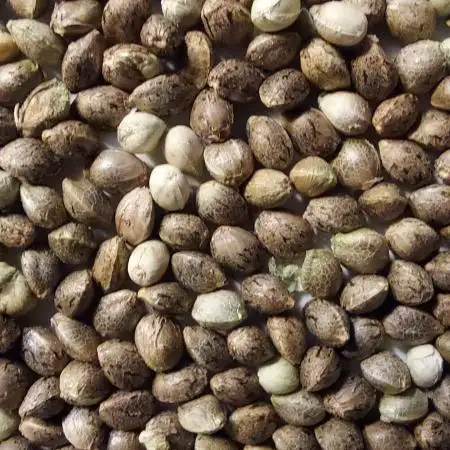The Grow Awards 2026 🏆 

























Hilfe!!!
Cs2810started grow question 10mo ago
Liebe Grower, bitte um Hilfe...
Seit 10 Tagen in der Blüte
PH 6.5
CALMAG Probleme? Oder nährstoffmangel?
Solved
Leaves. Color - Yellow
likes
All_our_small_plantsanswered grow question 10mo ago
Hi sieht noch nicht ganz so schlimm aus, die 6.5 PH ist das der runoff (was aus dem Topf läuft) oder gieß Wasser. Ich würde Runoff auf PH und EC Werte kontrollieren, PH unter 6.5 und EC unter 2. Wenn eines der Werte nicht stimmt dann kit Wasser 1 Woche flushen und erneut messen. Aber CalMag sieht anderst aus. Und Phosphor Mangel auch. Stickstoff kann ich auch ausschließen. Es kann aber sein das der PH wert vom Boden nicht stimmt und du langsam in eine Nährstoffblockade reinrutscht. Also überprüfen was ich oben geschrieben habe. Viel erfolf
00110001001001111Oanswered grow question 10mo ago
you don't have symptoms of either Caclium or Magnesium. If you flattened out all the ripples in the leaves and looked at it with your eye in normal lighting, i don't think you'll see interveinal chlorosis - even so, without spots accompanying it, it isn't visibly identifiably as a mg-deficiency. Ripples in leaves with intense light can give an illusion of inconsistent pigmentation. Darker in valleys and lighter at top of ripple makes it look like interveinal chlorosis but that is not always the case..
In third picture looks like any paling is occuring inside-out (from petiole out vs tip-in). This is possibly a S-deficiency. Look for a corky surface to trunk at bottom to help verify. Or, if any red/purple streaks in the trunk is another S-deficiency symptom -- ** not purple leaf stams (petioles)... the trunk of the plant and branches only.
If soilless, calculate some ppms and compare... one note, if an aspect of your formual is greatly different, this information is less likely useful, but still may be. the interrelationship of the elements involved and how they stimulate or antagonize each other makes for more than one formula that can work decently.
N 120-130 (drop to 90-100 by 3rd week of flower)
P 40-60 (this one can go higher without issues, but also just wasting it down the drain)
K 180ish
Ca 100+
Mg 75-80
S 100+
This is not a formula for soil, because you are supplementing existing nutrients in the soil. This is only for soilless/hydro setups. The more heavily you are supplementing the soil, the more it correlates, because that means you've nearly exhausted the nutrient content of the soil and relying more on fertilization than before. This makes it a bit closer to soilless/hydro context. Even if you built the soil yourself and years of experience with it, there's still unknowns in this regard, so take this merely as one more thing to consider before choosing a path.
1 like
Complain
Organomananswered grow question 10mo ago
Excessive nitrogen and not enugh magnesium.
Not a calcium issue.
likes
Complain
m0useanswered grow question 10mo ago
I don't see any signs of Calcium issues. Maybe some Mg, but could be a few other things.
https://420life.com/wp-content/uploads/2021/10/Marijuana-Leaf-Deficiency-Chart-scaled.jpg
here's a leaf chart to help you troubleshot this. Also if you know you are feeding a good amount of Mg then its not likely it. and might be more PH and avilablity.
likes
Complain
Similar Grow Questions
Solved

Dreamchvser
Nutrient Burn or am I missing something ?Hey i got a problem with two of 4 my plants, I feel like it’s a nutrient burn, cuz I accidentally fed them with the flower schedule one time.
What do you guys think ? Any advice?
Leaves. Tips - Die
Leaves. Dropping off
Leaves. Color - Yellow
2y ago
2
1
Solved

BullWeedDog
5ta semana de floraciónEstas hojas son de la parte media que puede ser?? boto la mayoría de las hojas de la parte baja y en la parte superior están amarillas pero creo que es por lo cerca que está del foco. Ramas inferiores que no llegaron a la luz con la pintas caídas y marrones!!
Leaves. Color - Yellow
Other. General questions
Plant. Other
3y ago
3
Solved

romi27
They say yellowing is normal, but this much?Not sure what to do. First time with autos, and they're around 69 days old. Breeder says 60-70 days mature. Used living soil. The yellow has climbed both plants yet the trichs are only 15-20% amber. Will my girls be okay? What kind of TLC can I give them until harvest? Noob here
Leaves. Dropping off
Leaves. Color - Yellow
4y ago
4
4
Solved

Jimmy_T43
First Grow - Yellow LeavesHi all! Yellow leaves problem.
I am giving are BioNova X-Cel and PK 13-14. I put like 1.6ml from the X-Cel and 0.6ml from the PK 13-14 in 2liters. (as the package says) and I water it every 3-4 day. Temp. Has been 32+ lately. BioBizz CalMag is coming today. Any Advice? THANKS!!!
Week 8
Leaves. Color - Yellow
4y ago
6
8
Solved

Xi_Ve
Deficiencies?Is this a sign of Ca/Mg deficiency? Or maybe even Potassium?
Gorilla Glue Auto
Week 8
Leaves. Color - Yellow
4y ago
5
4
Solved

ezgrows4anoob
What's going on with my clones? Do not have much information to add. VPD is not terribly off, DLI around 25.What's going on with these clones? Not sure what it could be. They could possibly be rootbound. They should have been transplanted a few weeks ago but I did not have the space.
3y ago
3
3
Solved

MDMA99
YELLOW SPOTSyellow spots .... help me ... what is it? is there a cure? which one?
Leaves. Color - Yellow
5y ago
4
Solved

XtoVall
Problem in 5 Week of VegetationNow in the 5 week of vegetation. The plants are Tropical Gelato cuttings. Everything was great until recently. They looked great.
After another light fertilization, the condition of the plants continued to deteriorate. Soil PH value is between 6 and 7. Can Someone help?
Leaves. Curl down
Leaves. Color - Yellow
1y ago
1
Solved

Topdog
Nutrient lock out?Does this look like a nutrient lock out?
Week 8
Leaves. Color - Yellow
5y ago
2
1
Solved

WeedyGonzales
Hey guys, so my plant is now end of week 4, can you tell me how she’s going? Why are my leaves like that?
Leaves. Color - Yellow
5y ago
2
Solved

SamCan
Yesterday i see new yellow leaves (plant 2). I have just checked them again and on the second plant the two small leaves are now brownish. What could that be? I water every two days and the soil is not wet but slightly moist. The other plant 1 grows wonderfully.Week 1
Leaves. Color - Yellow
7y ago
2
3
Solved

Spliffing_Around
Amount of FEEDHow much should I be feeding ? EC 988 is little at this point ?Leaves. Color - Yellow
3y ago
4
6
Solved

throwaway22
orange sherbet crispy leaves. Close to harvestFastbuds Orange sherbet first grow. I already harvested this plant but I’m curious what the issue was. The leaves were yellow and crispy to the touch. Other leaves looked fine. 2.5oz harvest but it dried really fast(7 days) and now smokes harsh. Don’t want to repeat this mistake.
Leaves. Color - Yellow
Leaves. Color - Pale
4y ago
4
4
Solved

banurnerphone
Day 38 autos: is this nitrogen deficiency or something cal mag could help with?Kia ora whanau,
Each of my three flowering autos (the Herbies Beginner Auto Mix #1: Ape Fruit Auto, Purple Chill Auto and Godzilla Cookies Auto) has an issue with yellowing older leaves. Do I need more nitrogen or is this potentially something cal mag would address? TYVMIA!
Week 6
Leaves. Color - Yellow
3y ago
4
3





















